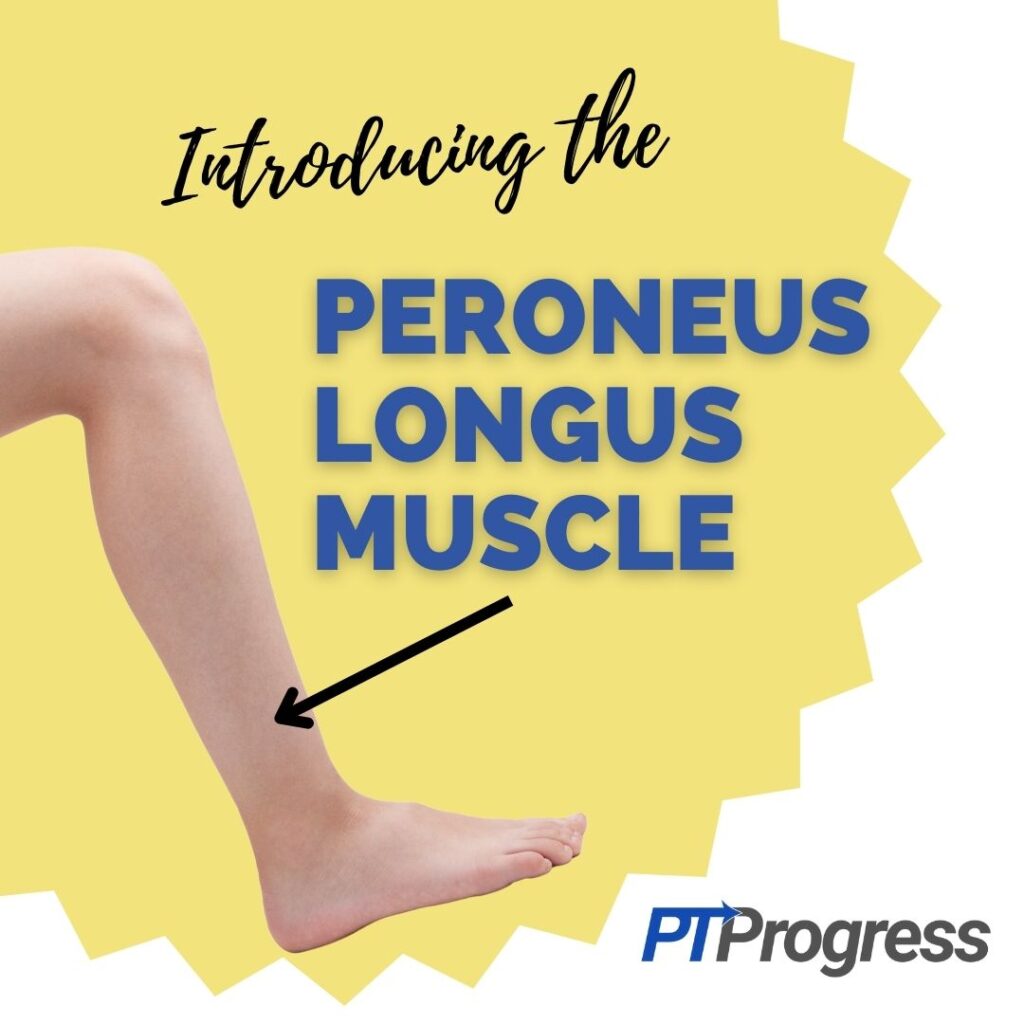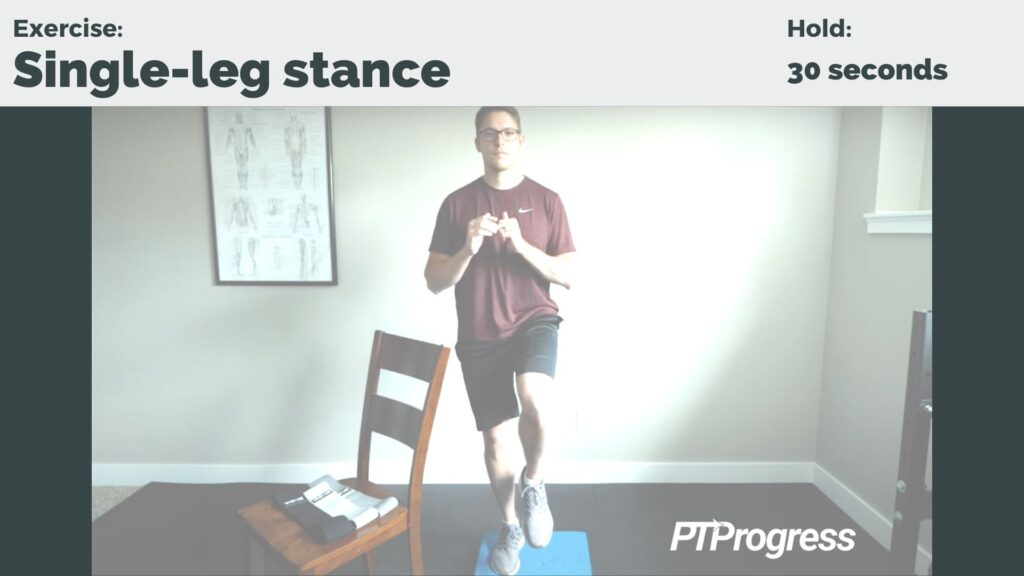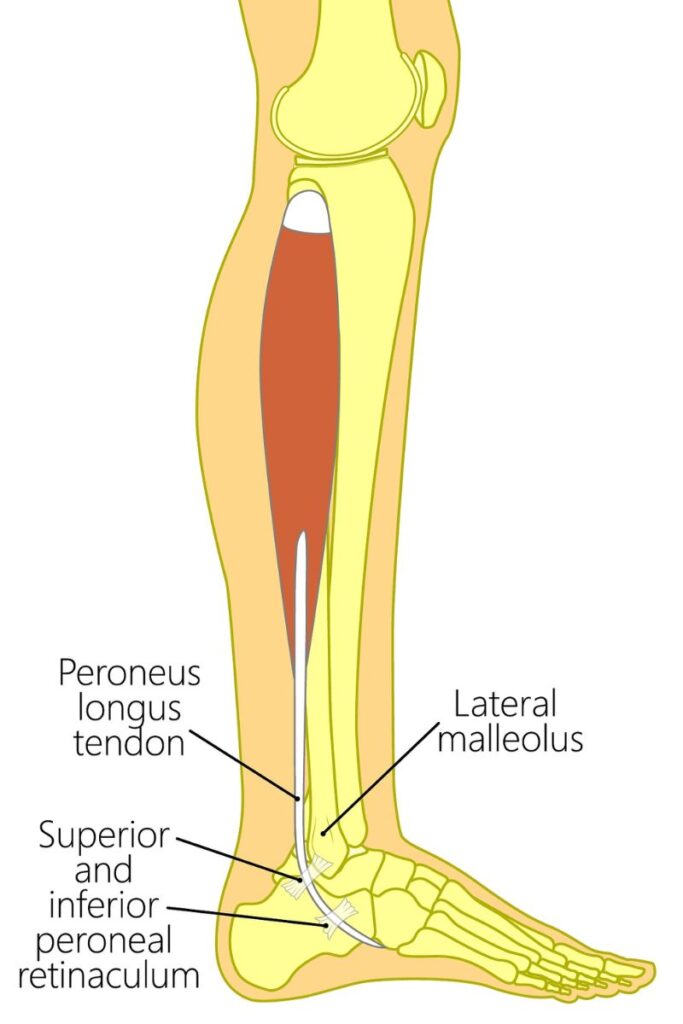
Have you ever gone for a run and felt a shooting pain along the side of your ankle? That pain could indicate a few different issues, one being an injury to your peroneus longus muscle.
If you haven’t heard of the peroneus longus, no worries—I’m here to walk you through everything you should know about this important ankle muscle, from anatomy and function to injury and treatment.
Peroneus Anatomy: The Long and Short of It
There are two main muscles that run along the outside of your lower leg: the peroneus longus and peroneus brevis. Together they make up the peroneal or fibular muscles. If you remember from biology class, the tibia bone is on the inside of your leg, while the fibula is on the outside.
Peroneus longus refers to the longer of these two muscles (while brevis means short). It begins on the side of your shin just below the knee and inserts or ends at the bones in your foot. The peroneus longus lies superficially, meaning, near the surface of your skin and not buried under other tendons or bones.
Peroneus Longus Muscle Function
This little-known muscle is responsible for repetitive ankle motions you probably make all the time. For example, you use the peroneus longus muscle to roll your foot outward for eversion, such as when you stand on the inside edge of your foot. It also helps you point your foot in what we call plantarflexion. Together, the peroneus muscles help stabilize your ankle when walking on uneven surfaces or performing side-to-side, lateral movements.
Your peroneus longus muscle is anchored by the peroneal tendon, a thick band of fibrous tissue. Although tendons are very strong, they can undergo microtears, which over time can lead to injury, swelling, and pain.
Most Common Peroneal Tendon Injuries
It’s easy to injure your peroneal tendon with activities that are high-impact or involve quick lateral movements. Sports such as basketball, running, and dancing are some of the most common culprits.
But a peroneal tendon injury can arise for a number of other reasons as well. Let’s take a look at just a couple of these possibilities.
Peroneal Tendinopathy
Common in many athletes, peroneal tendinopathy refers to a chronic wearing down of the peroneal tendon, usually resulting in inflammation, pain, and swelling.
Peroneal tendonitis is a similar-sounding term that indicates inflammation of the peroneal tendon. This can happen suddenly, say, from spraining or rolling your ankle inward, and doesn’t necessarily indicate a degenerative process.
Many of the same issues that cause chronic tendinopathy are responsible for acute tendinitis. For example, a sudden increase in training intensity—like running 12 miles in one day when your normal routine is 3—can stress the peroneal tendon and even cause it to tear.
Other reasons may be that your calf muscles are too tight, your footwear is unsupportive, or you have tenosynovitis, inflammation of the sheath that protects your tendon. Although you can develop tenosynovitis from overuse or trauma, it may instead indicate an autoimmune disease or infection.
Peroneal Tendon Pain
Whatever the cause for your peroneal tendon injury, it’ll probably manifest as pain on the side and back of your ankle. You may have difficulty walking on your toes or darting from side to side without sharp pain. Check for swelling, too—a sure sign of inflammation.
If your ankle muscles are weak or unstable, you may be more prone to develop peroneal tendinopathy. Exhibiting a varus foot (with too high of an arch, as opposed to a flat foot) can make you more susceptible to peroneal tendon injuries as well.
Left untreated, peroneal tendonitis can cause the peroneal tendon to completely or partially tear or become dislocated in what we call subluxation. You’ll feel intense pain along the outside of your foot and maybe even a sharp snap in your tendon.
How to Treat Peroneal Tendon Injuries
With any peroneal tendon injury, the first thing you should do is rest. Don’t try to play through it or push your workout beyond the point of pain.
Remember RICE? That handy acronym stands for Rest, Ice, Compression, and Elevation, and it applies to most musculoskeletal injuries. Start by resting from or reducing any activities that cause pain.
Next, grab some ice. You can use a baggie filled with ice cubes and wrapped in a towel if that’s all you have. But one of these compression ice packs will do a better job of keeping the swelling down. Compression helps restrict excess fluid, allowing critical bloodflow to reach the sight of the injury and speed healing.
Elevation can similarly reduce any pooling fluid that makes it harder for your body to recover, so put your feet up.
RICE is your best response to an acute injury, but it might not be enough to cure it. To help manage your pain, you may need to take an NSAID – a non-steroidal anti-inflammatory drug, such as ibuprofen or naproxen. Also consider wearing a boot or ankle brace to help stabilize your ankle and avoid irritating your peroneus muscle as it heals.
Many physical therapy clinics around the country offer dry needling as a way to manage pain. Inserting tiny, medicine-less needles into strategic trigger points can help release tense muscle knots and relieve pain.
Preventing Peroneus Longus Injuries
Injuring your peroneus longus muscle is never fun. You can ward off micro-tears and inflammation by taking a few preventative steps.
First, make sure you’re wearing proper footwear—shoes that support your arches, stabilize your heels, and cushion your feet all around. Don’t settle for shoes that aren’t a perfect fit, especially if you’ll be wearing them often or for high-impact sports. At the very least, supplement any subpar shoes with well-made inserts, like these from TreadLabs.
If you’re an athlete or considering working out more, increase your training gradually. There’s nothing more obstructive to your goals than an acute injury.
Finally, incorporate into your daily routine some exercises specifically for your ankles. Below I’ve rounded up three exercises we use in the physical therapy clinic to help strengthen a weak or injured peroneus longus muscle.
3 Exercises for Your Peroneus Longus Muscle
Whether you’re recovering from a peroneal tendon injury or you’re just wanting to strengthen your peroneus longus muscle, here are a few exercises you can do to ensure healthy, stable ankles.
Single-Leg Stance

First, practice balancing on one foot with a single-leg stance. It sounds easy—until you do it for 30 seconds. To avoid stumbling, stand in front of a chair or counter that you can use to steady yourself. With upright posture, bend your knee to lift one foot in front of you. Catch your balance and hold for 30 seconds. Rest and repeat 3 times.
To make this more challenging, try performing your single-leg stance while barefoot. The lack of footwear will kick into gear the muscles that stabilize your ankle. You can take it a step further by standing on a balance pad—a simple device we use in the PT clinic to replicate soft, uneven surfaces.
Single-Leg Heel Raise
Once you’ve got your single-leg stance down, you can further challenge your peroneal muscles with a single-leg heel raise. With one foot raised in front of you, rise up to the ball of your other foot, like you’re on tip-toe. Perform heel raises in a controlled manner, rising and falling without swinging forward. Try to do 10 heel raises at a time before lowering your other foot, resting, and repeating the sequence for 3 sets total.
Seated Ankle Eversion
The term “eversion” refers to the movement your foot makes when you tilt it outwards—a movement that relies on a strong peroneus longus muscle. So one way to strengthen that muscle is by performing resisted ankle eversions.
Suppose you want to strengthen the peroneal muscles in your right leg. Start by sitting on a chair or on the floor with your legs out in front of you. Loop a resistance band around the top part of your right foot, just below the toes, and anchor the other end of the band to a point to your left so it’s taut across the midline.
From here, while keeping your heels parallel, rotate your right foot outward to the right, then slowly return it to center. You should feel the resistance progressively increase as you turn your foot away from center. Perform 10 eversions, then rest and repeat for 3 sets.
If you don’t have a resistance band, you can practice ankle eversions with a pillow or soft ball. Place the soft object on the ground in front of you and press the lateral aspect (the outside or pinky side) of your foot against it, as if you’re trying to squish the ball or pillow. Keep your foot parallel with the ground and try to not lift the top of your foot as you do this. The direction of force you’re applying should move your foot outward into eversion. Hold for a few seconds and then relax, repeating 10 times for 3 sets.
How to Stretch your Peroneus Longus Muscle
It’s good practice to follow your exercise routine with some light stretching. For the peroneus longus muscle in your right leg, sit up in a chair and cross your right ankle over your left knee. Point your right toes up into inversion—the opposite direction from the eversions you were doing before. Apply pressure with your hands to lengthen and deepen this stretch. You should feel it along the outside of your lower leg and ankle.
Peroneus Longus Muscle: A Summary
The peroneus longus in your lower leg serves a number of mobility functions you wouldn’t want to lose to painful tendinopathy. Through gradual exercise, targeted stretching, and proper footwear, you can keep your peroneal muscles long and limber for years to come.



